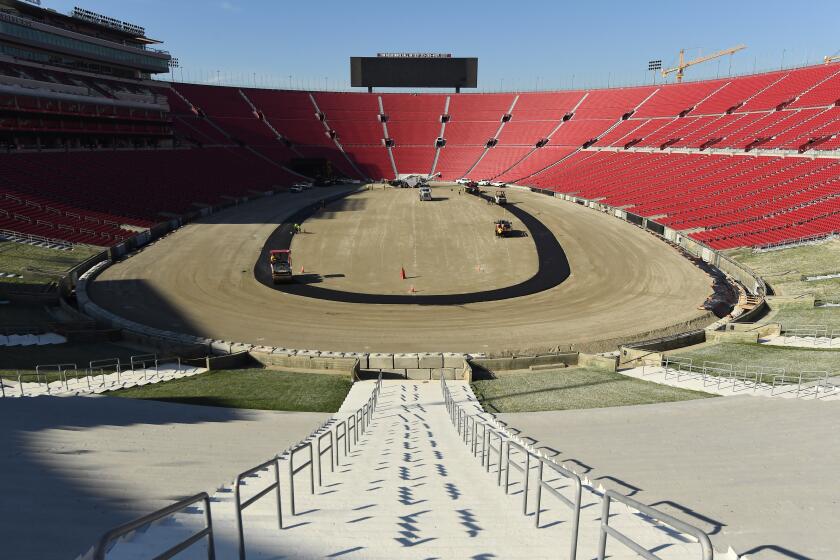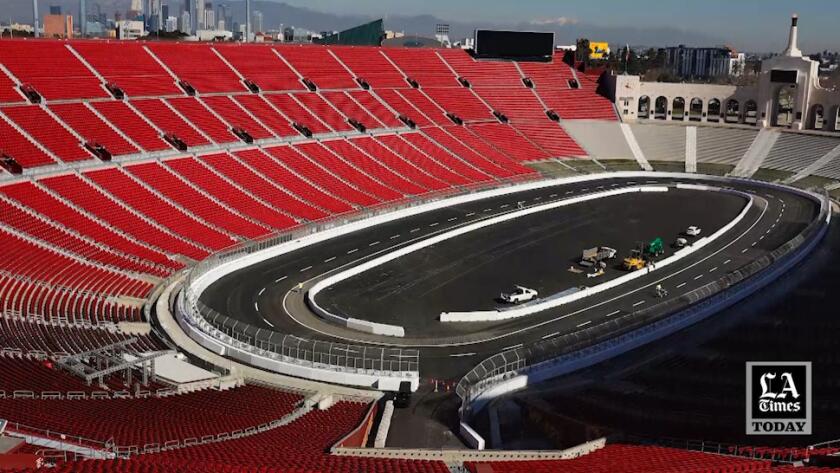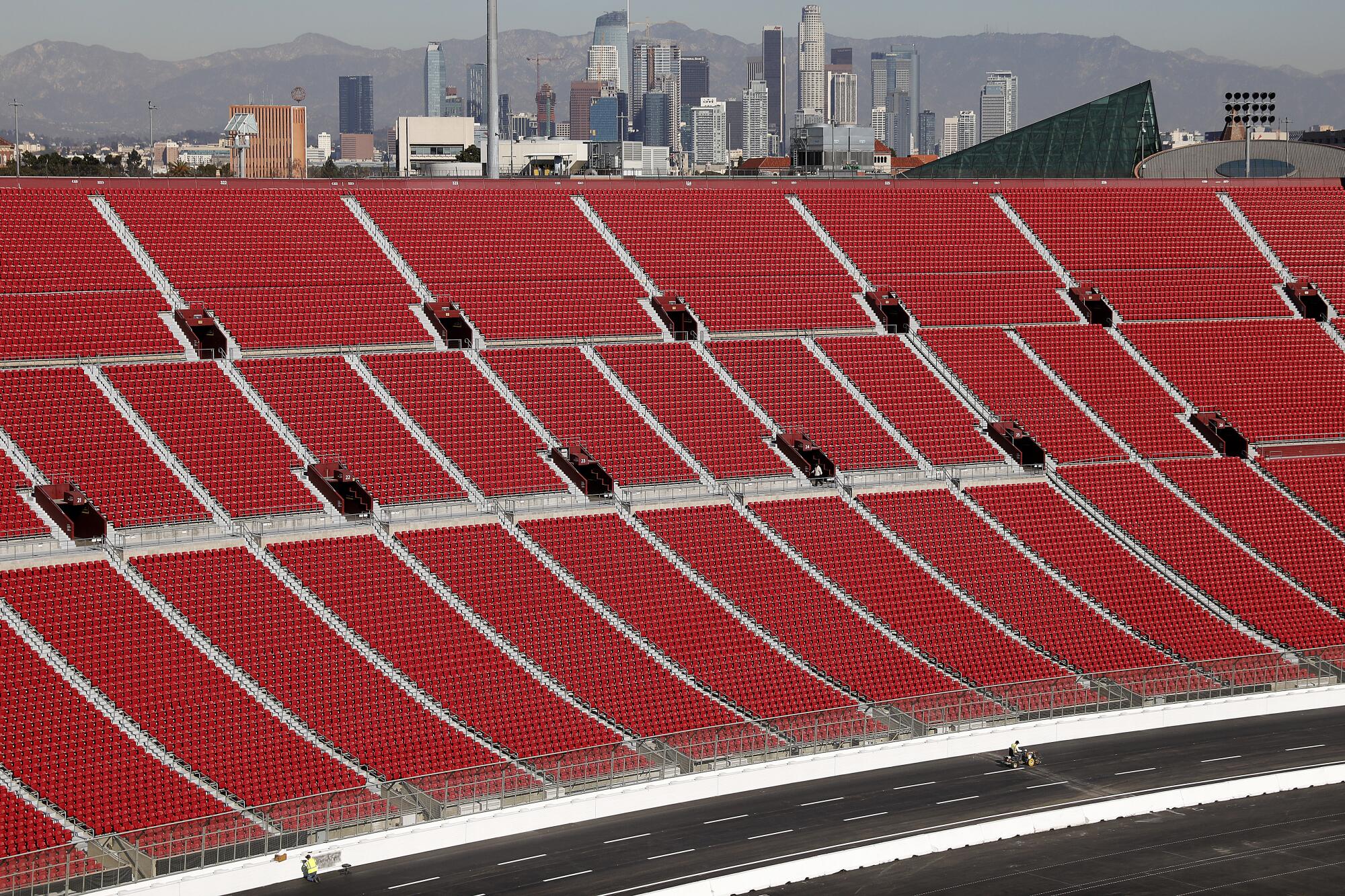
- Share via
The Martinsville Speedway is notably short, the smallest track in the NASCAR Cup Series. The Talladega Superspeedway is notably long, the biggest track in the series. The Daytona International Speedway is notably angled, sloped at 30 degrees.
Each has posed its own challenge for Martin Flugger, NASCAR’s vice president of engineering services. He’s made a career of helping build such diverse courses. Heck, in his past life, he built a bridge in Miami with a railroad car.
But none really compared to Flugger’s latest venture — trying to construct a temporary race track inside the Los Angeles Coliseum.
“A lot of surprise,” Flugger said of his first reaction to NASCAR’s idea, chuckling. “You want to put a track where?”
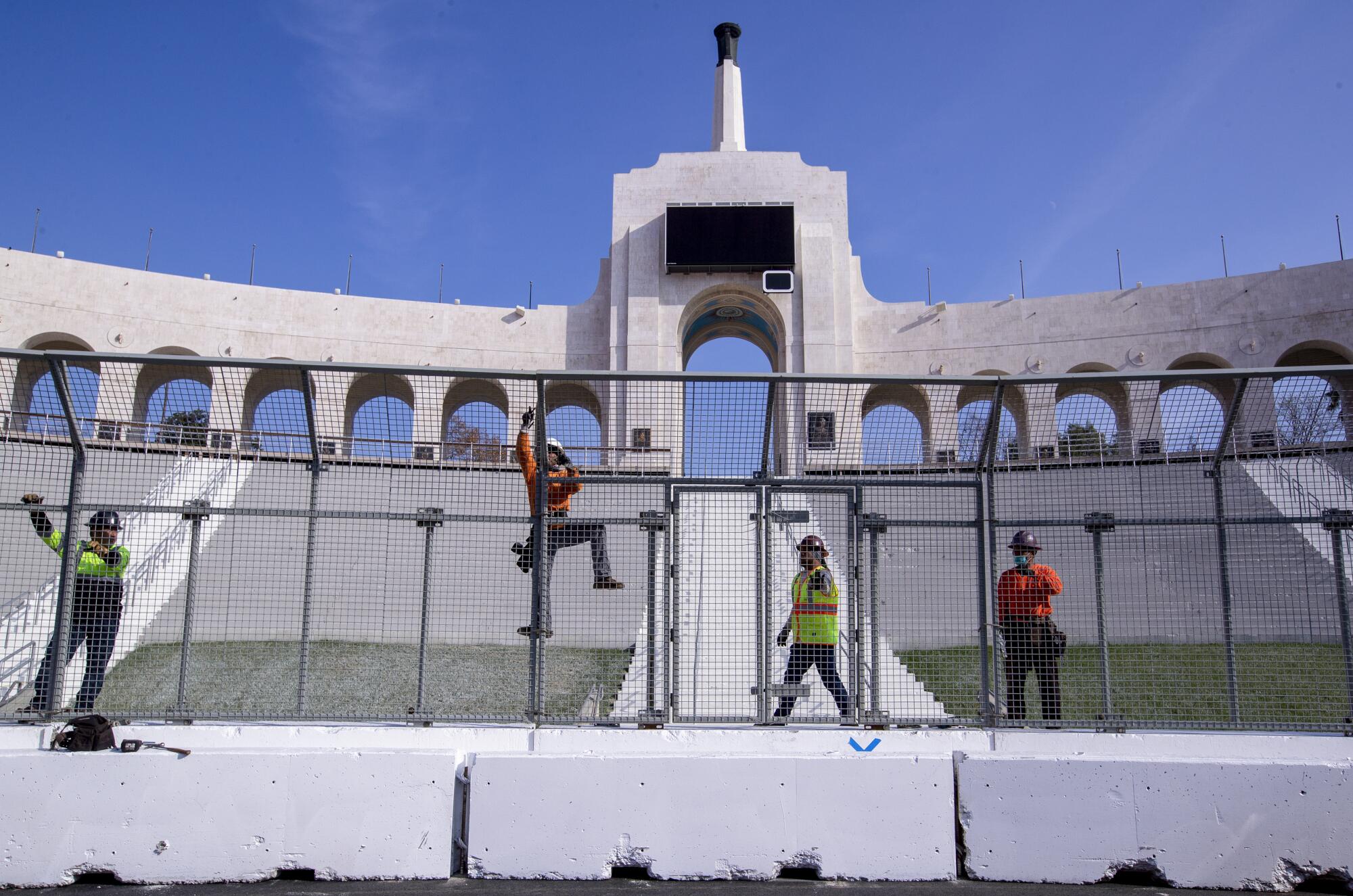
USC fans who walk into the Coliseum on Sunday won’t find the usual swath of green grass that serves as the Trojans’ stomping grounds. Rather, they’ll see a quarter-mile loop of asphalt serving as the site for NASCAR’s preseason Busch Light Clash.
Natural as it might look on race day, this is the first time NASCAR has experimented with building a track inside a stadium. The small dimensions have given executives like Flugger a challenge. But with the spectacle in a historic venue, NASCAR is hoping to usher in a new era for the sport.
Photos of the transformation of the historical Los Angeles Memorial Coliseum from football stadium to a quarter-mile short track NASCAR racetrack.
“Knowing what this event would end up being,” said Joe Furin, general manager of the Coliseum, “literally took my breath away.”
::
Ben Kennedy was driving down the 110 freeway in August 2019, the Los Angeles afternoon sun smiling down, when he saw the iconic arches of the Coliseum whiz by.
Kennedy, the NASCAR vice president for strategy and innovation, was on a trip to explore new markets. A simple thought popped into his head: How cool would it be to have a race in there?

Talks between NASCAR and the Coliseum stalled during the pandemic but picked up again last summer. The first step was determining whether the dimensions of the stadium could yield a legitimate race.
“I think there were rumors, ‘Oh, they’re going to build a street course outside of it — there’s no way they can actually build a track inside of it,’” Kennedy said.
Yet after Flugger’s team drew up concept sketches and created a virtual version of the course with simulation service iRacing, they realized the Coliseum wasn’t a normal football stadium. A dirt track borders the field, which gave just enough space for a race to be feasible.
“At a certain point, the corners might get too tight,” Flugger said. “This setup was perfect.”
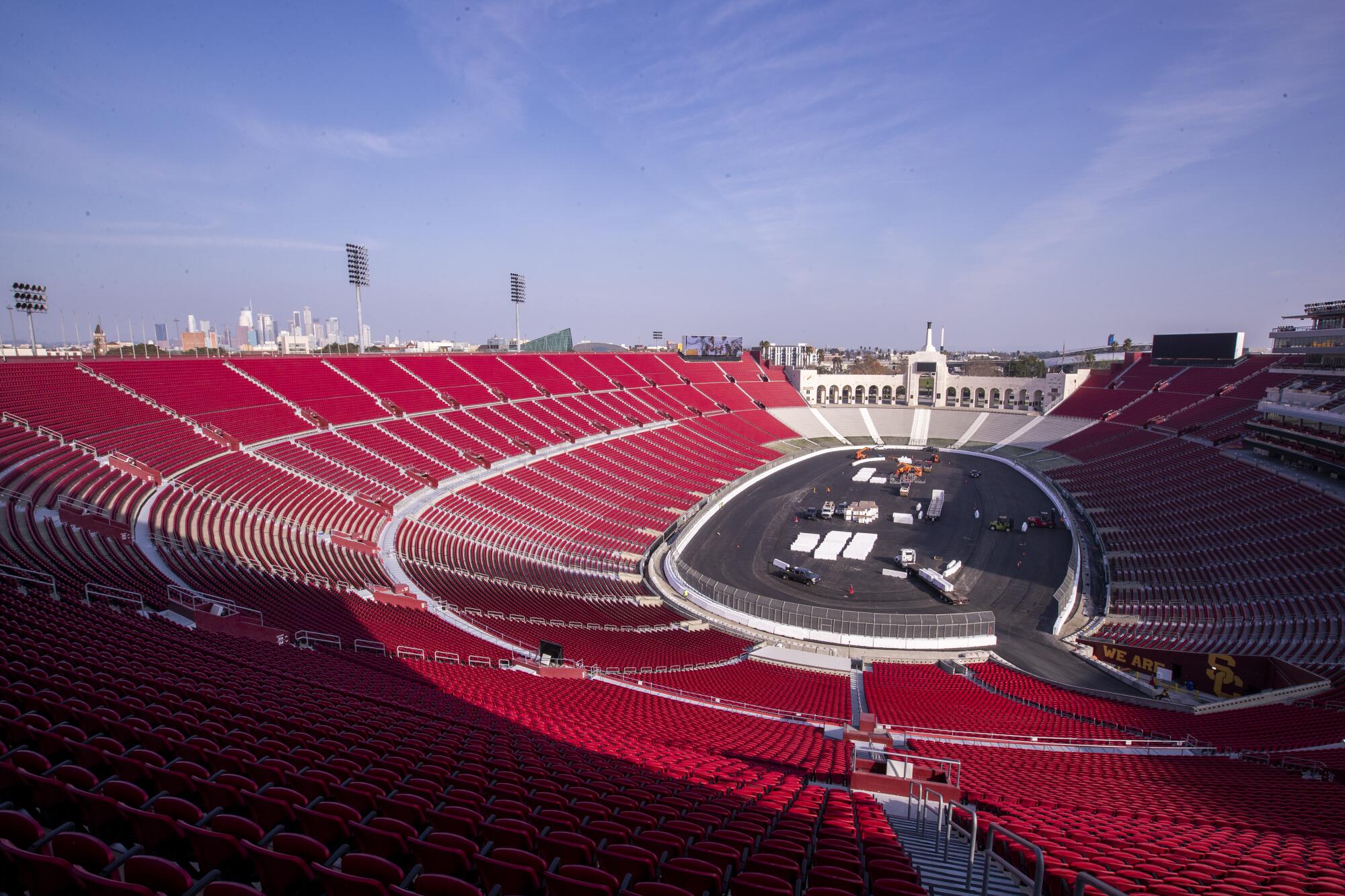
He was excited for the challenge ahead, which he had just a couple of months to complete.
Flugger was also very, very worried.
Questions pinballed around his head. How would the Coliseum’s field be preserved under tons of asphalt? How would vehicles enter and exit the stadium, and where would a pit road go? How would the race run when the track was complete?
Soon, everything fell into place, with Flugger’s team working with contractors to lay down nearly 14,000 cubic yards of asphalt inside the Coliseum. Cars will be able enter and exit for repairs through the tunnels on either side of the stadium, the first fourteen rows of seats closest to the track will be closed off for safety, and lights that normally illuminate the field at night are repositioned to cover the entire track.
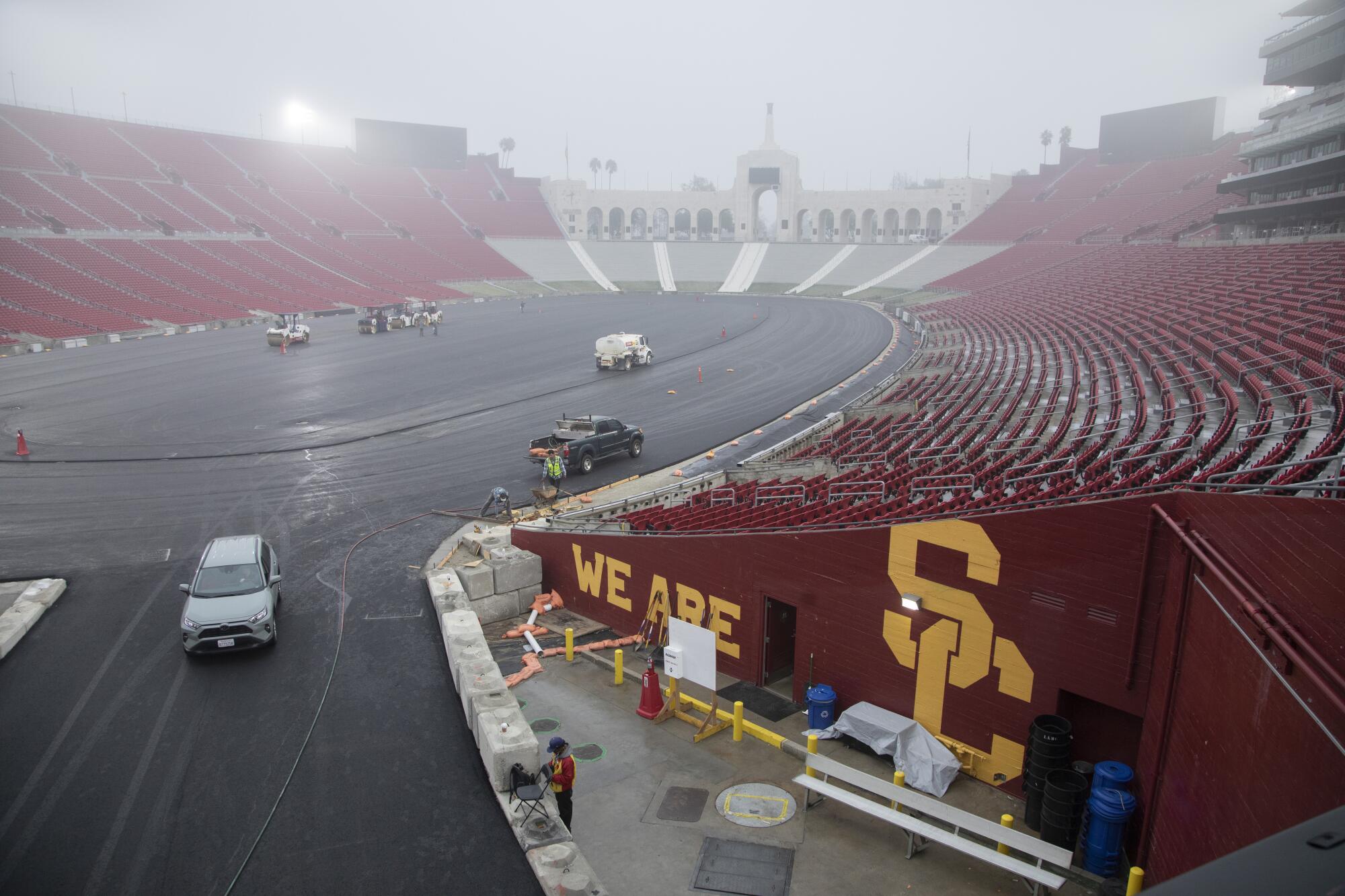
The course is now complete, the asphalt left to cure for a few more days before cars hum around the Coliseum during the Busch Light Clash. But Flugger won’t be satisfied until he sees the track in action.
“There’s always that you-hold-your-breath factor — that, ‘Is it right?’” Flugger said. “Just waiting for the cars to turn those laps.”
::
- Share via
Watch L.A. Times Today at 7 p.m. on Spectrum News 1 on Channel 1 or live stream on the Spectrum News App. Palos Verdes Peninsula and Orange County viewers can watch on Cox Systems on channel 99.
Terry Swinford is no stranger to the grit and grandeur of NASCAR, having grown up in Talladega, Ala. A construction worker, Swinford helped build a couple tracks but hadn’t worked on anything inside a stadium that hosted two Summer Olympics.
“I think this is a [historic] event,” Swinford said.
Earlier this month, as members of the Boys and Girls Clubs of Carson watched from a distance, Swinford worked with a crew to install safety barriers on the interior of the track that would absorb a car’s impact and redirect the potential energy to the outside walls.
That’s of key importance considering how cramped the course could get on race day. In the final race of the Clash, 23 cars will rev up at the same time on the quarter-mile track. Drivers William Byron and Cole Custer each hopped on the iRacing simulation of the Coliseum track before it was constructed and said fans should expect some chaos.
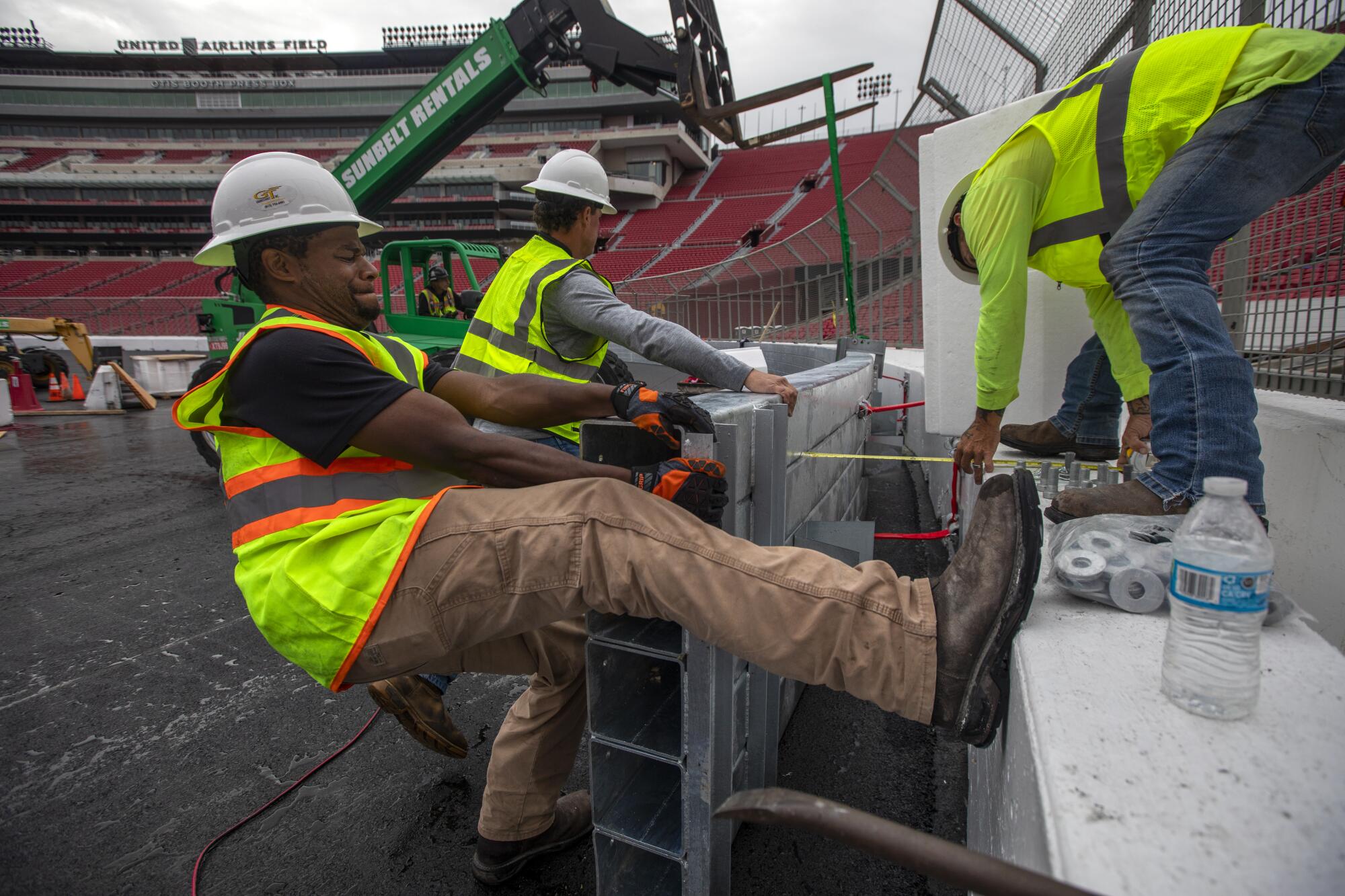
“It’s just a really tight racetrack,” said Custer, who’ll drive for Stewart-Haas Racing. “It’s extremely small, it’s extremely tight quarters, and there’s going to be a lot of beating and banging.”
The course itself is a throwback to the tight street races drivers like Custer and Byron grew up on.
“We have a lot of short-track racing around the country that will watch that race and be excited to cheer for it,” said Byron, who races for Hendrick Motorsports.
Drivers will wheel around the infield under the legendary peristyle, the air heavy with memories of gold medals and iconic college football games.
Student Jarik Monge, touring the course with the Boys and Girls Club, put it best.
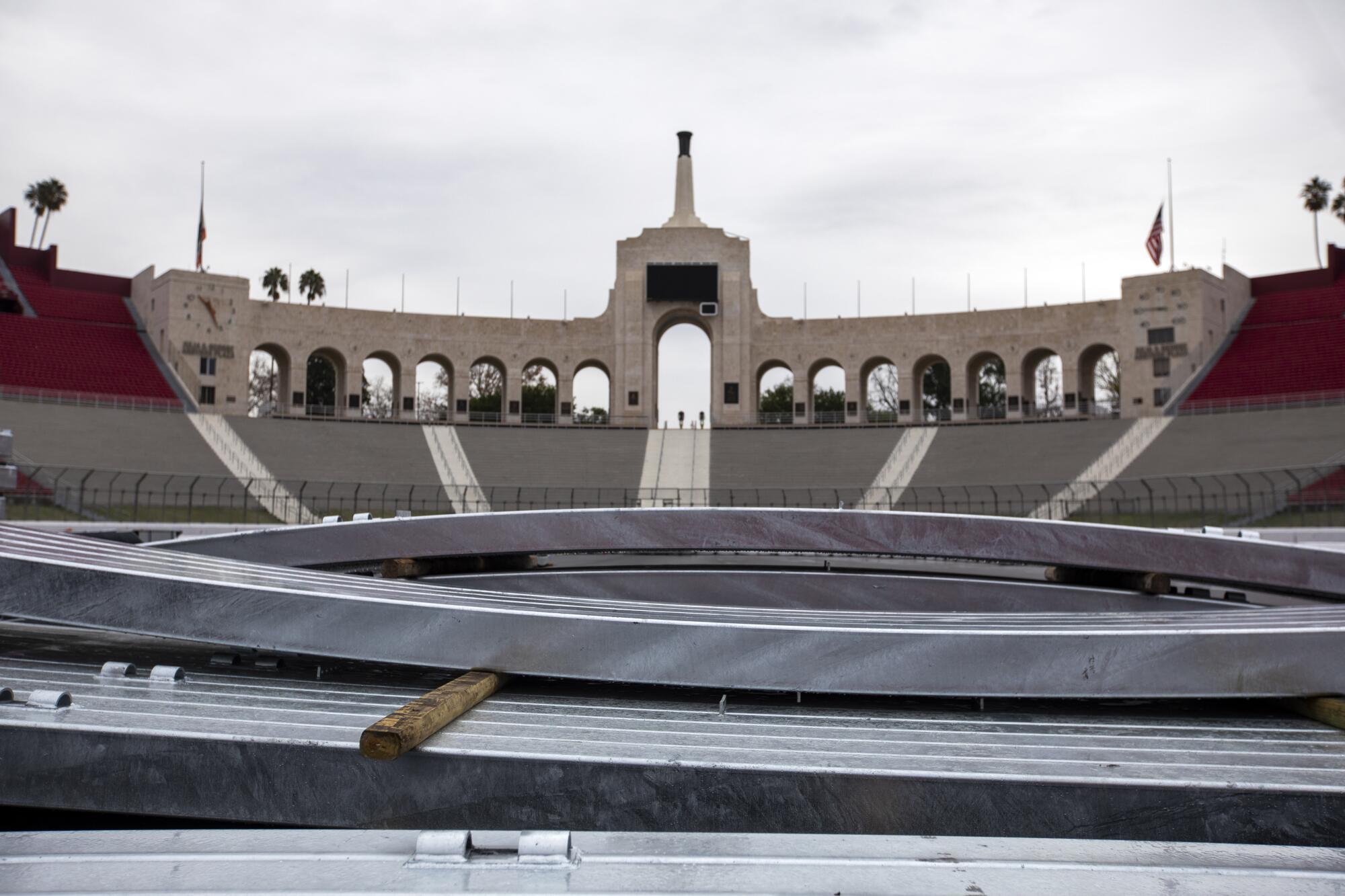
“Holy crap, this looks like a Roman coliseum,” Monge said, marveling at the architecture. “Hopefully we get a carriage race someday.”
As NASCAR continues to explore newer markets like Los Angeles and St. Louis, many feel the effort could help expand the sport.
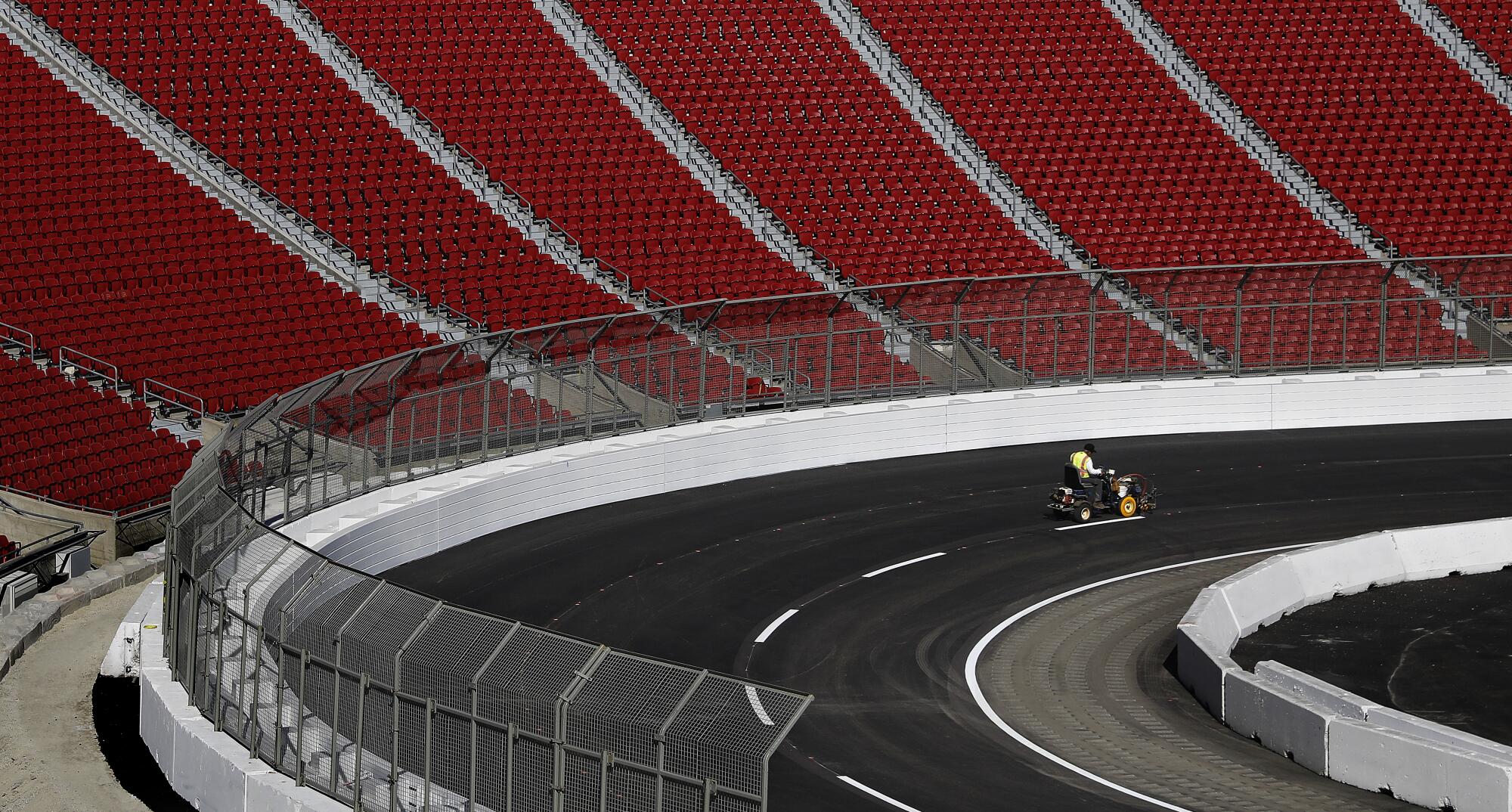
“It’s going to bring fans to the racetrack that you haven’t seen before,” Custer said. “It’s going to get us more in the spotlight, and I think that’s something everyone in the industry’s looking forward to.”
More to Read
Go beyond the scoreboard
Get the latest on L.A.'s teams in the daily Sports Report newsletter.
You may occasionally receive promotional content from the Los Angeles Times.
